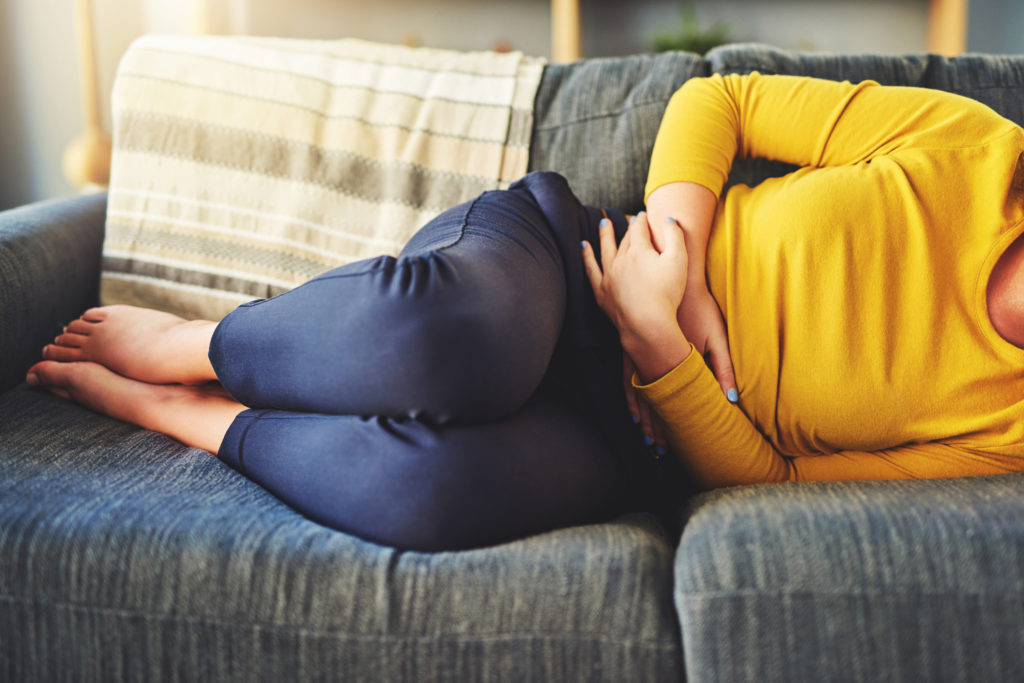Endometriosis: You’re Not Alone

“It is truly unbearable. Imagine throwing up, chills, fever, and lying on your bathroom floor in pain. It is real, and it is awful. Childbirth was easier.” —Crystal
“I suffered greatly from endo and didn’t find out until it was almost too late. Now I am watching my 15-year-old do the same. I tried to tell her primary care practitioner, but they didn’t listen. Four days ago, she begged me to help just rip it all out… Our whole family was rocked by this illness. I need guidance…my baby needs help.” ―Nicole
“Women and girls should not have to live with pain for years like I have. I have been through countless procedures and medications to control it. I have had a baby and the pain came back stronger than before having a baby. I finally want someone to listen to me and not try to put me on more drugs.” —Amy
These are just a few quotes from women across America, provided by the Endometriosis Association. Endometriosis is a gynecological condition that affects about 10% of all women. Women with endometriosis often experience extremely painful periods, infertility, pain following sexual intercourse, lower back pain, heavy menstrual bleeding, and cramps. March is Endometriosis Awareness Month, and it’s time to speak up about it.
What is Endometriosis?
Endometrium is a tissue that lines the inside of a woman’s uterus. Endometriosis occurs when this tissue grows outside of the uterus and onto the ovaries, fallopian tubes, and other tissue in the pelvic region. The endometrium tissue still grows, thickens, and bleeds during the menstrual cycle as it would within the uterus, but because it has no way of exiting the body, it becomes trapped and can cause excruciating pain.
Endometriosis Causes and Symptoms
Women with endometriosis may experience any or all of the following symptoms:
- Painful periods
- Painful intercourse
- Painful bowel movements or urination
- Infertility
- Excessive bleeding – during or in-between periods
The exact cause of endometriosis is unknown, although doctors have several theories. One theory is retrograde menstruation, where menstrual blood flows back through the fallopian tubes instead of leaving the body. This blood contains endometrial cells which can attach to other organs and tissues outside of the uterus where they continue to grow.
Other theories state that hormones, such as estrogen, can transform either embryonic cells or peritoneal cells (found on the inner side of the abdomen) into endometrial cells during puberty.
Menstrual blood may also find its way into the pelvic area through a surgical scar from a C-section or hysterectomy. Endometrial cells can attach themselves to the incision and elsewhere in the pelvic region.
Another theory places the blame on a faulty immune system. Problems in the immune system could mean that the body is unable to recognize and destroy endometrial-like tissue growing outside of the uterus.
Endometriosis affects all types of women, regardless of age, race, or medical history. However, you may be at an increased risk of endometriosis if you started your period at an early age, have short menstrual cycles, heavy periods that last longer than seven days, or have a relative with endometriosis.
Endometriosis and Infertility
Many women with endometriosis also struggle with infertility. Nearly 40% of women with endometriosis have trouble getting pregnant because the endometriosis can block the fallopian tubes and prevent the egg and sperm from meeting. It can also damage sperm and eggs.
Although endometriosis can make a pregnancy more difficult, it is not impossible. Many women with mild to moderate endometriosis can have children, although doctors sometimes recommend having children sooner rather than later, since symptoms may worsen over time.
Endometriosis Treatment Options
While there currently is no cure for endometriosis, there are ways to treat the symptoms. Your treatment options will vary based on the severity of symptoms you experience. Every woman is different and what is recommended for one may not be recommended for you. You should, of course, consult your gynecologist and inform them of any changes in your symptoms.
Women can try over-the-counter pain relievers to combat pain, or hormone therapy to help slow the development of endometrial tissue growth. Sometimes different forms of birth control are also recommended, as they also work to manage the production of hormones.
If more conservative treatment options are not effective, your doctor may recommend surgery. A laparoscopic surgery can remove endometrial tissue, which can help reduce pain. In some cases, a hysterectomy is performed to remove the uterus and ovaries.
For more information on endometriosis, we encourage you to speak to one of our doctors at Cheyenne OBGYN. Resources about endometriosis can also be found on our website here. During the month of March, we’re encouraging Endometriosis Awareness. It is a common disorder that affects millions of women around the world, including our patients in Cheyenne, Wyoming. If you suspect that either you, a friend, or a family member may be suffering from endometriosis, don’t be afraid to ask your doctor questions and learn more about it.

Leave a Reply